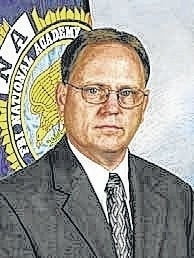
First responders in Ohio communities reeling from waves of heroin overdoses say some people tell them they should just say no to using so many resources on drug abusers.
Authorities in Ohio say people have expressed frustration about rescuing addicts who often immediately resume using the potentially deadly drug. There are also concerns voiced about the wide-ranging social and government budget costs involved, including for the overdose antidote naloxone, usually under the brand name Narcan.
Some signs of heroin overdose backlash:
• A police photo of a grandmother and her boyfriend unconscious after overdosing with a 4-year-old boy in their car went viral this month after the police department in Ohio’s East Liverpool posted it on Facebook, drawing thousands of comments including from people decrying lenience toward users who endanger children or steal to support their habits.
• A retired attorney wrote an op-ed column in The Cincinnati Enquirer examining the costs of treating heroin addiction, the strain on public resources and the rise in “drugged driving” accidents as he urged aggressive punishment. “What social policy is advanced by subsidizing recklessness?” John M. Kunst Jr., of suburban Cincinnati, wrote earlier this year. “Why do we excuse and enable addiction?”
In Clinton County
“Heroin addiction reaches everyone,” said Wilmington Police Chief Duane Weyand. “While I believe there is a place for treatment, I am a firm believer that we have to start looking at the punishment side of this. When crack cocaine took to the streets in the mid to late ’80s, laws were passed to punish those caught selling it. Efforts to fight those dealing were enhanced on almost every level. Now that we are in the middle of a heroin epidemic that far exceeds the crack cocaine issue we are still struggling to get laws passed to deal with Fentanyl and Carfentanil.”
Col. Brian Prickett of the Clinton County Sheriff’s Office said, “While I understand the philosophy of both sides of this societal problem, turning a blind eye to criminal behavior which is driving this epidemic will not solve the problem it will only intensify it. We are taught at a very young age that there are consequences for our actions. Until we make individuals truly accountable for their actions they will just continue down the same path.
“The Clinton County Sheriff’s Office has been steadfast in providing Drug Abuse Resistance Education (D.A.R.E.) to area youth so they understand the danger of drugs and how the choices they make, positive or negative, have a direct correlation to the consequence they receive,” Prickett said. “While this program is very useful, it is only one tool in our effort to combat this societal problem.
Around the state
Police Chief Thomas Synan Jr. of Newtown, Ohio, who heads a Cincinnati-area heroin coalition task force, said “I understand the feeling that someone is doing something to themselves, so why do the rest of us have to pay? But our job is to save lives, period.”
He started hearing more of the frustration amid an overdose spike in the Cincinnati area that saw 174 reported overdoses within six days last month. And the outbreaks continue, with seven overdose deaths Saturday in the Cleveland area.
Synan said unlike with repeat heroin overdosers, he has never had members of the public say he shouldn’t try to save a habitual drunk driver after an auto accident or someone who has repeatedly attempted suicide.
Marion, Ohio Fire Capt. Wade Ralph said heroin has an “extremely expensive” toll on his department, struggling to keep up while being understaffed and relying on donations from health organizations for naloxone to revive those who overdose.
“There’s a human factor to that that some people, I think, just forget about or maybe they ignore it and say, ‘Hey screw it, let them die.’ I’m like, you can’t do that. We have people here, we have guys at the firehouse, whose kids have been hooked on stuff like that,” said Ralph, whose city of some 37,000 people was hit last year by 30 overdose hospitalizations and two deaths in a 12-day stretch.
In the Cincinnati area, first responders have held the death toll to what appears to be low double digits, pending lab results. The spreading practice of mixing heroin with the powerful painkiller fentanyl or with carfentanil, so strong it’s used to tranquilize elephants, has resulted in frequent needs for multiple doses of naloxone.
“If they weren’t doing their job, they’d all be dead,” said Christel Brooks, a recovering addict in Cincinnati who said she’s been clean for 12 years now. She said the problem is lack of treatment facilities and other resources for intervention before rescued addicts resume drug use.
Police said they hoped sharing the video will alert people to the consequences of drug use that they see on the front lines, as East Liverpool police explained about their photo of the overdosed couple with a child.
Ron Calhoun, an anti-drug activist in northern Kentucky, disputes suggestions he hears often that reviving people with naloxone is enabling heroin use.
“The only thing Narcan enables is breathing,” he responds. “We just want to keep them alive and get them into treatment.”
He said one young woman he knows had been revived 15 times with naloxone.
“And today, she’s in rehab,” Calhoun said. “Corpses don’t do well in rehab.”
Contributing to this report were Associated Press writer Kantele Franko in Columbus, AP photographer John Minchillo in Cincinnati, and AP researcher Jennifer Farrar in New York.



